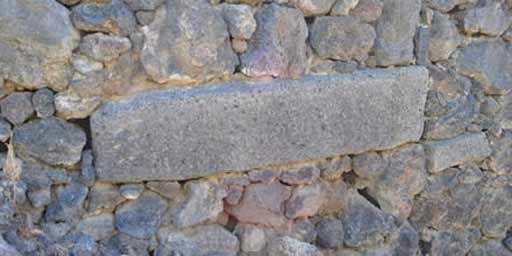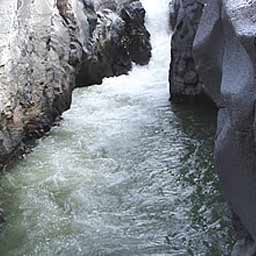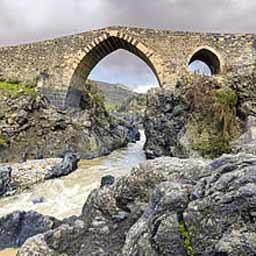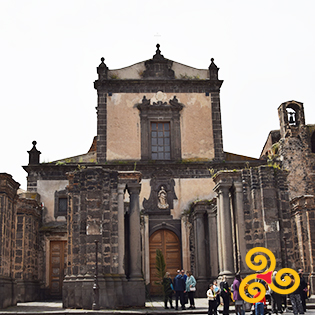Mendolito Archaeological Site
The Archaeological Site of Mendolito, located in the homonymous district near Adrano, contains the remains of an ancient city which is striking above all for its great extension: eighty hectares, a vast area, higher, even if slightly, than that of Megara Hyblaea and even double compared to the ancient city of Naxos.
The district until the first half of the twentieth century was characterized by citrus groves, mostly planted with oranges, of which the singular terraces still remain, perfectly orthogonal and obtained with dry stone walls in volcanic rocks, fed by terracotta and cement twills.
The settlement developed on a basaltic terrace near the eastern bank of the Simeto, on a land made fertile by the volcanic soil and the ease of water supply. The Mendolito archaeological site is however considered particularly important for the conspicuous bronze storage room, which is believed to refer to a foundry connected to a sanctuary, and for the unique inscription in Sicilian language monumental in character to date. From the Mendolito area also comes a bronze statuette depicting a banqueting, a small masterpiece of the archaic age, dating back to 530 BC, the famous "Efebo", now kept and exhibited at the Paolo Orsi Regional Archaeological Museum of Syracuse.
The first excavation campaigns, carried out in 1962-1963, brought to light some archaic houses, the city gate, a necropolis, and it was possible to explore a section of the walls, a fortification entirely built using unhewned lava stones.
The southern city gate is protected by two horseshoe-shaped towers dating back to the second half of the sixth century. to. C .. In the doorway, between the two towers, a layer of fallen roof tiles was found which suggests the presence of a sort of canopy above the opening between the two bastions. The famous sandstone block, now preserved in the Paolo Orsi Regional Archaeological Museum in Syracuse, was inserted in the eastern jamb of the door, bearing an important inscription in Panhellenic, not Greek. It is a continuous writing graffitied from right to left on the external face of the block, arranged in two lines and with a sinister trend. It is the longest and most important Sicilian text known so far, whose interpretation is still controversial, dating back to the second half of the sixth century BC.
The southern necropolis, located in the Sciare Manganelli district, some typical tombs of the Sicilian center have been found. These are so-called tholos tombs, small circular domed lava stone constructions, perhaps of distant Helladic ancestry, with grave goods referable to several depositions. The tombs were built directly on the lava bank and were intended to accommodate more individuals almost certainly belonging to the same family.
The fortification, it is believed, was to surround the city on the north, south and east sides, leaving the western side unguarded, naturally defended by high rocky walls.
Unfortunately, almost nothing is known of the buildings of worship and of public character, despite the fact that some important architectural elements in lava stone are exhibited at the Archaeological Museum of Adrano .
In fact, the urban layout, the sacred areas, and the name of the city remain unexplored, even if the first hypotheses, with the comfort of numismatics, identify it with the ancient indigenous city of Piakos.



